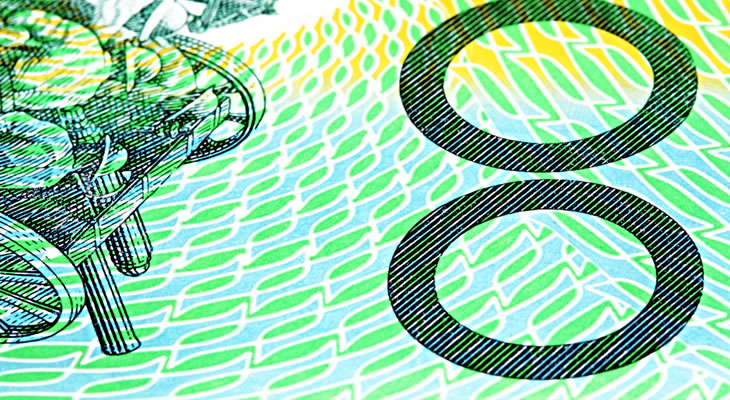GBP/AUD Drops Further as Market Turns Away from USD
- Pound (GBP) Remains Pressured by ‘Brexit’ Fears– Could this change next week?
- UK Services PMI Above Expectations– Composite score also solid
- ‘Aussie’ (AUD) Sentiment High– Week of good data solidifies gains
- Update: US Fed Rate Hike Bets Plummet – Increases appetite for risky ‘Aussie’
- Forecast: RBA Rate Decision on Tuesday– Monday economic calendar quiet
The Pound to Australian Dollar exchange rate continued to fall towards the end of Friday’s trade session after US labour data printed well below expectations.
The latest change in Non-Farm Payrolls figure shocked investors with a low score of 38k. Investors had previously expected April’s 123k to be followed up by 160k in May.
As a result, bets that the Federal Reserve would hike the key US interest rate in June plummeted. Appeal for the US Dollar’s rivals, including the risk-correlated Australian Dollar, improved immediately.
At the time of writing, GBP/AUD was down around -0.6%. The pair trended in the region of 1.9810 after hitting a new two-week-low of 1.9803.
(Published 9:48 03/06/16)
The Pound Sterling to Australian Dollar (GBP/AUD) exchange rate attempted to recover on Thursday as ‘Aussie’ investors indulged in a short bout of profit-taking, but GBP/AUD looks set to end the week well in the Australian Dollar’s favour due to solid Australian data.
GBP/AUD briefly reached over 2.00 on Thursday, but sank back below 1.99 as of Friday morning. The pair currently trends narrowly in the region of 1.9915. GBP/AUD looks to end the week over -450 pips down from the week’s opening levels.
Pound (GBP) Struggles Despite Solid PMI Scores
The Pound has suffered considerably over the past week as ‘Brexit’ bets made a considerable shift in favour of the ‘Leave’ campaign.
With investors betting on a low chance of a ‘Brexit’ just last week, the market was shocked earlier this week as Bookmakers raised the chances of a ‘Brexit’ from 17% to 26%.
The ‘Leave’ campaign’s increased rhetoric on immigration is widely thought to be the reason for the shift, and as a result the Pound’s volatility has soared this week, giving way to easy losses.
Markit’s May PMI reports for Britain this week have been mixed and unable to afford the Pound much strength.
Manufacturing improved from 49.4 to 50.1, above expectations of 49.6. Construction worsened to 51.2 despite being expected to hold at 52.0. Friday’s Services PMI came in well above expectations of 52.5 however, improving from 52.3 to 53.5. The Composite print scored 53.0, an overall improvement from April’s hat-trick of underwhelming PMI results.
Markit’s report states;
‘The rate of growth was one of the weakest seen over the past three years. The rate of expansion nevertheless picked up from April’s 38-month low, and expectations for activity over the forthcoming 12 months strengthened.
Where firms held positive outlooks for activity, this was partly dependent on the outcome of the forthcoming EU referendum, uncertainty surrounding which was found to have adversely affected over one-in-three companies.’
Due to ongoing concerns towards the economy and a generally slow growth rate, the Pound’s reaction was muted and it failed to recover against the Australian Dollar.
Australian Dollar (AUD) Completes Bullish Week on Strong Growth Data
Favour for the Australian Dollar soared this week despite mixed data in other risk-tied markets, due to an unexpectedly high report of Q1 Gross Domestic Product (GDP).
Data throughout the week had been largely positive, but Wednesday’s growth reports shocked investors with a quarter-on-quarter improvement from 0.6% to 1.1%, well above the expected 0.8%. The yearly GDP score was projected to slow from 3.0% to 2.8% but instead gained to 3.1%.
This report left the Australian Dollar bullish as it soared across the board, only briefly halting on Thursday as investors indulged in a short bout of profit-taking from the ‘Aussie’s new highs.
AUD may also have slipped due to Thursday’s mixed data. While the Australian trade deficit reported an unexpected improvement from -1971m to -1579m (despite being expected to worsen to -2100m) the retail sales report disappointed by halving March’s score of 0.4% and coming in at 0.2%.
However, the ‘Aussie’ solidified easily on Friday’s solid data, as the AiG’s latest performance of service index report escaped contraction of 49.7 to score 51.5.
While the commodity-correlated Australian Dollar has felt pressure from the falling price of iron ore, its most lucrative commodity, the currency looks set to sustain considerable gains this week as it trades flatly heading into the weekend.
Pound Sterling to Australian Dollar (GBP/AUD) Exchange Rate Forecast: June RBA Meeting Ahead
With the Australian Dollar still feeling the pressure from May’s shocking Reserve Bank of Australia (RBA) interest rate cut, investors are certain to adjust their positions and keep their eyes fixed on the RBA next Tuesday.
The RBA historically follows up an interest rate cut with another in the following months, subsequently many economists are expecting a cut to take place in Tuesday’s session.
However, others have argued that the RBA is unlikely to cut again before the release of Australia’s Q2 Gross Domestic Product report, and as such the widely expected cut may not occur until August.
Monday’s session is expected to be relatively quiet, and the UK’s economic calendar is fairly uneventful throughout the whole week.
Sterling investors will likely focus their attention towards the latest ‘Brexit’ debates instead, with the EU referendum vote now only three weeks away.
New polls on the referendum are likely to be released early next week, which have been key sources for Pound activity in recent months.
The Pound Sterling to Australian Dollar (GBP/AUD) exchange rate currently trends in the region of 1.9915, while the Australian Dollar to Pound Sterling (AUD/GBP) exchange rate trades at around 0.5020.



Comments are closed.